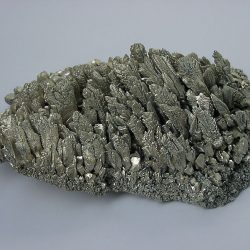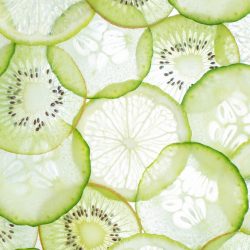In the vast world of alternative cancer therapies, vitamin B17 is a subject that has generated a great deal of interest and controversy. In this article, we’re going to delve into the world of this mysterious vitamin, exploring its origin, its role in the human body and its use as a potential anti-cancer treatment.
What is vitamin B17?
Vitamin B17 or laetrile, produced from amygdalin, is made up of two sugar molecules, one benzaldehyde molecule and one cyanide molecule.
Amygdalin is a substance that occurs naturally in fruit pits (drupes) such as apricot pits, peaches, apples and other stone fruits (cherries, plums). It is also present in almonds, mung beans, egg yolks, brewer’s yeast, lentils and certain other compact grains and cereals.
This toxic natural chemical compound is famously promoted as a cure for cancer, and often incorrectly referred to as vitamin B17. Amygdalin is cyanogenic: hydrolysis of this cyanogenic heteroside or its degradation by β-glucosidases yields, in addition to ose (gentiobiose), hydrocyanic acid and benzaldehyde (which gives the bitter almond odour). Partial hydrolysis and then oxidation of one of the products released gives laetrile, which has been claimed to have anti-cancer properties.
The origin of vitamin B17
Amygdalin was first discovered in 1830 by two French chemists, Pierre Jean Robiquet and Antoine François Boutron Charlard, in bitter almonds, the fruit of Prunus dulcis.
Vitamin B17 was first discovered in the early 20th century by Dr Ernst T. Krebs Sr. Krebs Sr, a doctor who devoted his career to cancer research. His son, Dr Ernst T. Krebs Jr. went on to popularise the use of vitamin B17 (laetrile) as an anti-cancer treatment.
Laevomandelonitrile – A detailed exploration
Levomandelonitrile, more often identified by its alias, laetrile, is a fascinating organic specimen. It is commonly despised for amygdalin, a molecule to which it is closely related. In fact, laevomandelonitrile can be obtained from amygdalin through a process called hydrolysis. But it should be noted that these two molecules, although linked, are fundamentally different.
Laetrile: a semi-synthetic molecule patented in the United States?
Laetrile is a semi-synthetic molecule, part of whose structure is shared with amygdalin. It is remarkable for its nature and is said to be patented in the United States, a distinction that underlines its uniqueness among other organic compounds. However, because of this characteristic, laetrile is often mistaken for amygdalin.
The complex link between laetrile and amygdalin
To understand the complex link between laetrile and amygdalin, it is essential to explore the process of hydrolysis. Hydrolysis, in the context of these two compounds, is the chemical reaction by which laetrile is obtained from amygdalin. Although the two molecules share some of their structure, laetrile is a semi-synthetic derivative of amygdalin. It is this semi-synthetic nature that gives laetrile its unique characteristics and its special place in the organic domain.
Similarities and differences between laetrile and amygdalin
On the surface, laetrile and amygdalin appear identical, a misperception that often leads to their confusion. However, closer study reveals significant differences. Amygdalin is a natural molecule, while laetrile is semi-synthetic. In addition, the hydrolysis process required to form laetrile from amygdalin indicates that the two molecules, although closely related, have distinct synthesis pathways.
The role of vitamin B17 in the human body
The role of this vitamin in the human body remains a subject of intense debate. Some proponents of vitamin B17 therapy argue that it can play a crucial role in maintaining good health and fighting cancer.
The positive effects of vitamin B17
Vitamin B17 is reputed to have a number of positive effects on health. Proponents of laetrile therapy claim that it can help prevent cancer by destroying cancer cells. They also claim that it can help relieve the pain associated with cancer and improve the patient’s general state of health.
The effectiveness of anti-cancer treatment with Vitamin B17
Vitamin B17 is a natural alternative in the fight against cancer, acting in the same way as biological chemotherapy. A particular feature of cancer is its uncontrolled growth and its ability to infiltrate neighbouring tissues. To spread, the cancer cell deploys a specific enzyme, literally cutting the surrounding tissue like scissors.
The action of Vitamin B17 against cancer cells
When Vitamin B17 is consumed, this enzyme divides the vitamin molecule. This process generates the production of a toxin that specifically targets and destroys the cancer cell. Since only the cancer cell possesses this enzyme, the toxin is released only in the tumour and in the dispersed cancer cells. Injecting laetrile into cancer treatment is proving to be a highly effective method, particularly for combating metastases.
Increasing the effectiveness of treatment with Vitamin B17
The efficacy of this therapy is increased when combined with hyperthermia treatment, vitamin C infusions and/or cell extracts. The treatment is non-traumatic and works perfectly with traditional anti-cancer treatments such as surgery, chemotherapy and radiotherapy.
The limitations of vitamin B17
However, it is important to note that these claims are not supported by the majority of the medical community. What’s more, the use of vitamin B17 as an anti-cancer treatment is banned in several countries, including the United States, due to safety concerns.
The use of vitamin B17 as an anti-cancer treatment
The use of vitamin B17 as an anti-cancer treatment is an issue that has been widely debated. Some believe that this vitamin has the potential to be a cure for cancer, while others are sceptical about its efficacy and safety.
How does vitamin B17 work against cancer?
The theory is that vitamin B17 specifically targets and kills cancer cells. This is because these cells contain an enzyme called beta-glucosidase (also known as emulsin), which is not present in normal cells. This enzyme breaks down vitamin B17 into two chemicals: benzaldehyde, which has an analgesic effect, and cyanide, a powerful poison that is supposed to kill the cancer cell.
Good to know: in low doses, hydrogen cyanide and benzaldehyde pose no danger to the body’s healthy cells.
Therapeutic options offering Vitamin B17 in the treatment of cancer
Options include:
- Vitamin B17 infusions
- Vitamin B17 tablets
Vitamin B17 infusions are thought to be the most effective anti-cancer treatment. They are said to be more effective than taking Vitamin B17 tablets or chewing apricot kernels. This natural medical alternative therefore complements conventional treatment options for cancerous diseases.
How a Vitamin B17 infusion treatment works
During the day of treatment, the patient receives an infusion of this vitamin. These infusions are administered under medical supervision and last approximately one hour. This form of anti-cancer treatment is very well tolerated. Once the treatment is complete, the patient can return home.
During the week, the anti-cancer treatment continues with Vitamin B17 in the form of tablets or apricot kernels. Dosage is determined individually, depending on the patient and the form of cancer.
Scientific evidence supporting the efficacy of vitamin B17
However, it should be noted that current scientific evidence does not support these claims. Several clinical studies have failed to demonstrate that vitamin B17 is effective in treating cancer. In addition, the theory that vitamin B17 can specifically target cancer cells has been widely criticised by scientists.
Controversies surrounding the use of vitamin B17
Vitamin B17 is at the heart of many controversies. Although it is considered by some to be a promising anti-cancer treatment, it is also associated with numerous risks and potential side effects.
An in-depth meta-analysis of the scientific literature raises questions about the efficacy of a particular therapy. The general conviction is that this efficacy has not been sufficiently proven, given the absence of positive studies meeting the quality criteria defined by the authors. Furthermore, the dangers associated with cyanide poisoning appear to outweigh the potential benefits of this treatment.
Conflicting scientific results
The scientific research into this therapy is ambivalent. For example, a 1998 study reported specific activity targeting tumour cells in vitro. On the other hand, the National Cancer Institute’s summary indicates that weak anti-cancer activity has been observed in animal studies, while no activity has been observed in human clinical trials. It should be noted that some scientific studies nevertheless show positive results.
The position of the Food and Drug Administration
Despite these observations, the US Food and Drug Administration (FDA) has never approved the use of this therapy. This position reinforces the debate on the credibility and efficacy of this treatment, raising more questions than it answers.
Potential side effects of vitamin B17
Reported side effects of vitamin B17 include symptoms such as nausea, vomiting, headaches and dizziness. In some cases, it can also cause a drop in blood pressure, liver problems and even fatal cyanide poisoning.
The scientific and ethical debates surrounding vitamin B17
The debates surrounding the use of vitamin B17 as an anti-cancer treatment are not limited to its safety and efficacy. There are also ethical issues surrounding its promotion as an anti-cancer treatment despite the lack of solid scientific evidence to support it.
In conclusion, although vitamin B17 has been promoted as a potential anti-cancer treatment, current scientific evidence does not support this claim. It is essential that patients considering vitamin B17 as an anti-cancer treatment discuss this option with their doctor. Although some studies indicate potential anti-cancer activity, the lack of conclusive evidence and the risks associated with cyanide poisoning cast significant doubt on the efficacy of this therapy. The lack of FDA approval underlines these concerns, making further scientific research necessary to clarify these ambiguities. The challenge for modern science is to navigate this complex landscape in order to provide safe and reliable therapeutic solutions.
Frequently asked questions
- What is vitamin B17? Vitamin B17, also known as laetrile or amygdalin, is a natural substance found in certain fruit and seed pits.
- Is vitamin B17 effective against cancer? Current scientific evidence does not support the claim that vitamin B17 is an effective anti-cancer treatment.
- Is vitamin B17 safe to use? There are concerns about the safety of vitamin B17, in particular the risk of cyanide poisoning.
- Can I take vitamin B17 without consulting a doctor? It is strongly recommended that you consult a healthcare professional before starting any new treatment or supplement, including vitamin B17.
- Where can I find vitamin B17? This vitamin is found naturally in the pits of certain fruits and seeds, such as apricots, peaches, apples and almonds.





